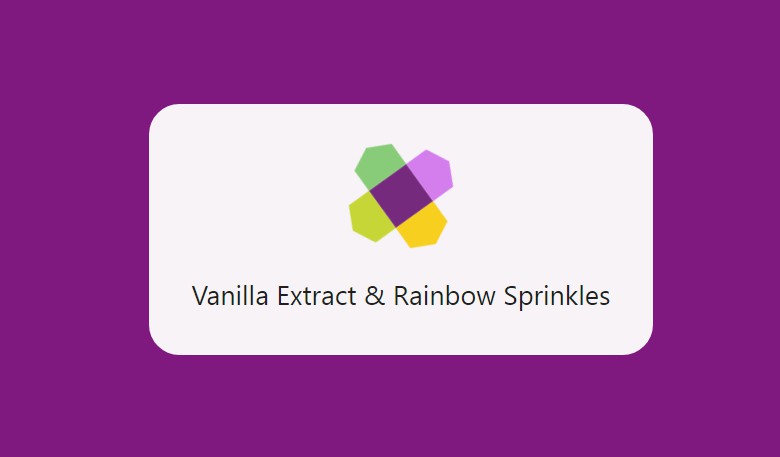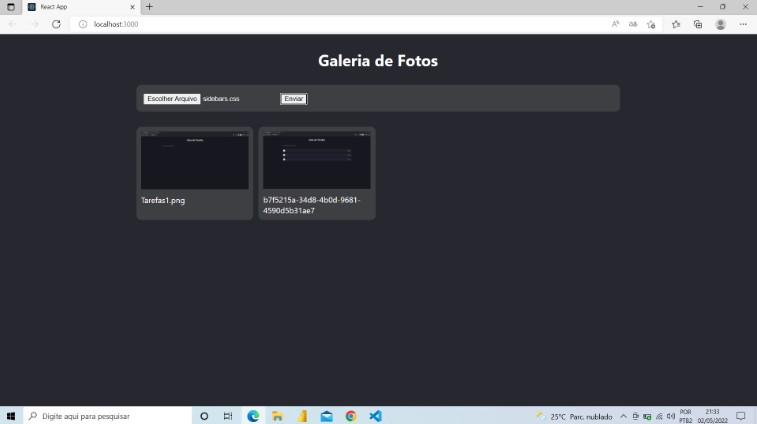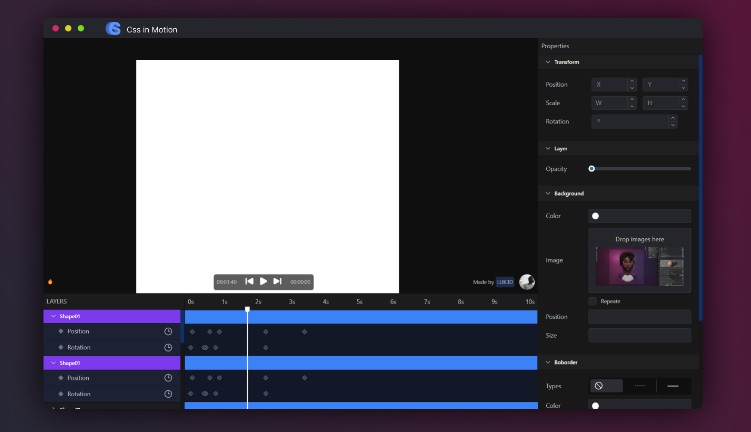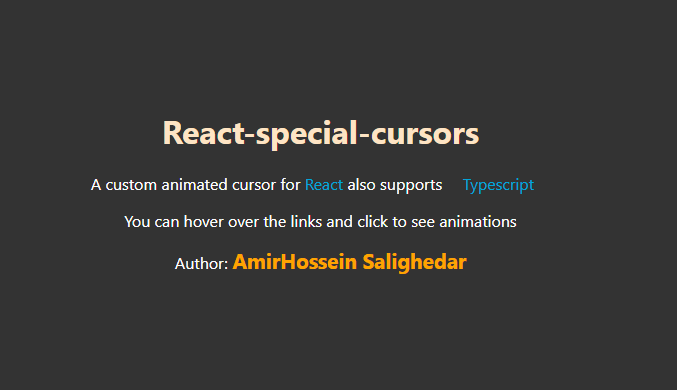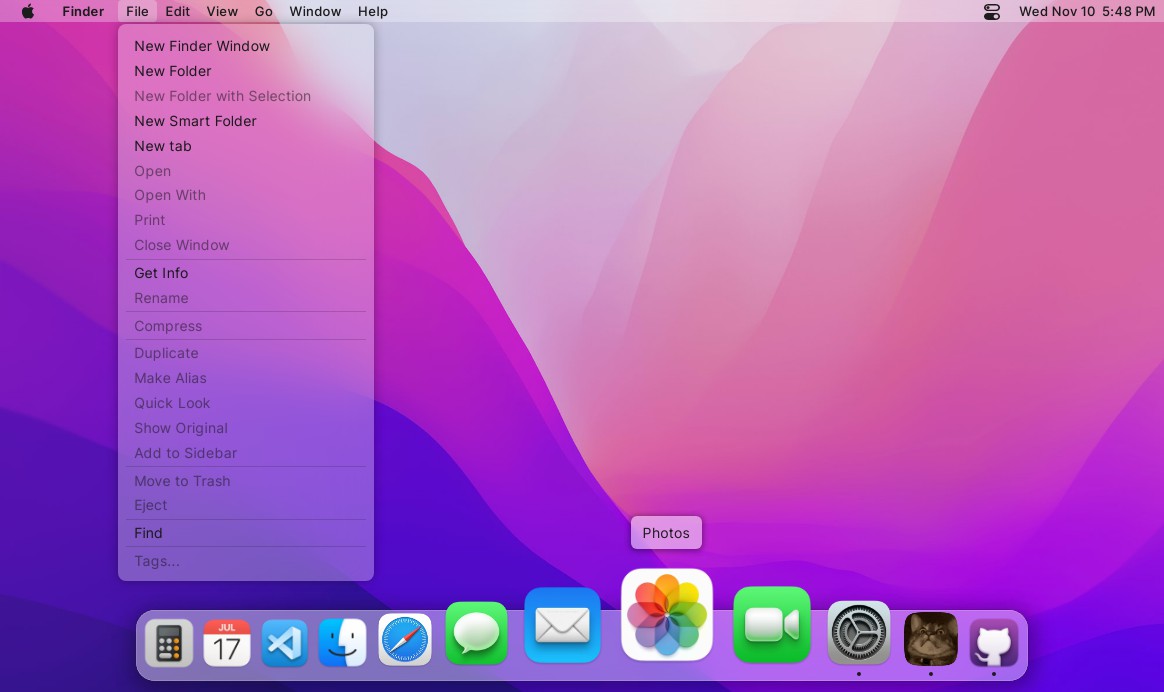Rainbow Sprinkles ?
Dynamic, theme-driven, style props for vanilla-extract.
Rainbow sprinkles works similarly to @vanilla-extract/sprinkles. Like sprinkles, it generates custom CSS utility classes at build time. While sprinkles requires a pre-defined list of available values, Rainbow Sprinkles uses CSS custom properties to allow dynamic values using inline style variable assignments.
Compared to sprinkles:
- Rainbow sprinkles ships a fraction of the CSS. For each property, Sprinkles produces CSS that’s a factor of
pre-defined values * possible conditions. Rainbow sprinkles produces CSS that only scales with the number of conditions. - Supports dynamic values. Rainbow Sprinkles uses dynamic inline style assignments to set the value of each property. You still get the TypeScript editor suggestions, but the ability to use any valid CSS value for that property.
- Cannot be used in
.css.tsfiles. Rainbow Sprinkles derives its values from inline style property assignments, which means it needs to be configured with a “host” element (see setup for details).
Setup
Install Rainbow Sprinkles.
npm install rainbow-sprinkles
Create a rainbow-sprinkles.ts file, then export your configuration methods:
import { createRainbowSprinkles } from 'rainbow-sprinkles';
// or import a theme (e.g. `createTheme`, `createThemeContract`)
const vars = {
space: {
none: 0,
small: '4px',
medium: '8px',
large: '16px',
// etc.
},
colors: {
blue50: '#eff6ff',
blue100: '#dbeafe',
blue200: '#bfdbfe',
gray700: '#374151',
gray800: '#1f2937',
gray900: '#111827',
// etc.
},
};
export const {
getBoxProps,
createRainbowSprinklesCss,
extractSprinklesFromProps,
} = createRainbowSprinkles({
conditions: {
mobile: {},
tablet: { '@media': 'screen and (min-width: 768px)' },
desktop: { '@media': 'screen and (min-width: 1024px)' },
},
defaultCondition: 'mobile',
dynamicProperties: {
// Define pre-determined values, which will be autosuggested
color: vars.colors,
backgroundColor: vars.colors,
margin: vars.space,
marginTop: vars.space,
marginLeft: vars.space,
marginRight: vars.space,
marginBottom: vars.space,
// Will work with any CSS value
display: true,
textAlign: true,
flexDirection: true,
justifyContent: true,
alignItems: true,
},
staticProperties: {
// Build out utility classes that don't use CSS variables
display: ['block', 'flex', 'inline-block', 'inline-flex'],
},
shorthands: {
bg: ['backgroundColor'],
m: ['margin'],
mr: ['marginRight'],
ml: ['marginLeft'],
mt: ['marginTop'],
mb: ['marginBottom'],
marginX: ['marginLeft', 'marginRight'],
marginY: ['marginTop', 'marginBottom'],
mx: ['marginLeft', 'marginRight'],
my: ['marginTop', 'marginBottom'],
},
});
export type Sprinkles = Parameters<typeof getBoxProps>[1];
Then set-up in your “host” component (in this case, a Box component):
// Box.css.ts
import { createRainbowSprinklesCss } from './rainbow-sprinkles';
export const rainbowSprinklesCss = createRainbowSprinklesCss();
// Box.tsx
import {
getBoxProps,
extractSprinklesFromProps,
Sprinkles,
} from './rainbow-sprinkles';
import { rainbowSprinklesCss } from './Box.css';
interface BoxProps extends Sprinkles {
children?: React.ReactNode;
}
export const Box = ({ children, ...props }: BoxProps) => {
const { sprinkles, otherProps } = extractSprinklesFromProps(props);
return (
<div {...getBoxProps(rainbowSprinklesCss, sprinkles)} {...otherProps}>
{children}
</div>
);
};
Good to go!
import { Box } from './Box';
function App() {
return (
// Use pre-defined values
<Box backgroundColor="$blue50" m="$large">
{/* Or any valid CSS value */}
<Box textAlign="center">Hello world!</Box>
</Box>
);
}
dynamicProperties vs staticProperties
One trade off that’s made for supporting dynamic values is that we have to increase the size of the document. Instead of just appending a single class to an element to add a style, both a utility class and an inline style assignment is added to an element. While this setup will still produce an overall smaller bundle in many cases, some large applications may observe frequent recurrence of specific combinations of CSS properties and values. In these cases, those combinations can be set-up in staticProperties in the initial configuration. staticProperties will produce typical CSS utility classes. The runtime portion of Rainbow Sprinkles will defer to the CSS classes created by staticProperties and not apply any inline style assignments.
Here’s an example scenario in which this property could be valuable. Your organization sets up Rainbow Sprinkles and sees widespread adoption. Your metrics reveal that the most frequently used prop/value combinations is display="flex" and margin with the application’s theme variables. You can run an experiment to evaluate whether making these property/values combination static improves the bundle size.
createRainbowSprinkles({
dynamicProperties: {
// Still support arbitrary values
display: true,
margin: true,
},
staticProperties: {
// Also produce fixed CSS classes
display: ['flex'],
margin: vars.space,
},
});
Contributing
Contributions are what make the open source community such an amazing place to learn, inspire, and create. Any contributions you make are greatly appreciated. For detailed contributing guidelines, please see CONTRIBUTING.md
Thanks
- Vanilla Extract for creating an inovative and configurable CSS preprocessor
- Styled System for inventing theme-driven style props
- Homebase, Wayfair’s design system, for providing interesting problems to solve
License
Distributed under the MIT License. See LICENSE for more information.
Contact
The Homebase Engineering Team – email Rogin Farrer – @roginfarrer
